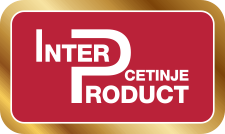MARKET SUPPLY IN RAW MATERIAL
Total meat production in Montenegro is around 20,000 tonnes, with the consumption figure of around 30,000 tonnes. The deficit of about 10,000 tonness represented a 33% share in production. Despite the considerable deficit in production compared to consumption needs, market supply is not a constraint for development of Montenegrin meat processing capacities. The same statement can be applied to the Company – INTERPRODUCT. There are various international and Serbian meat suppliers in our market, with a significant upward trend in the number of domestic sources. Thus, the market supply may be observed as highly competitive, which is a favourable situation for all the companies involved in meat processing, as it enforces development and improvement of their own production.
Pork, as the main raw material for the final products of the Company INTERPRODUCT, is largely purchased and supplied from the international market. The quantities of pork available in Montenegrin market are insufficient to meet the market demand. For example, over the last period the average consumption of pork has amounted up to 9,800 t, with a deficit of about 6,000 t. Apart from a number of small-scale meat processors, who purchase pork in Montenegrin and Serbian market, the majority of large-scale meat processors import pork from Austria, the Netherlands, Belgium and Hungary. In general, locally produced meat loses less in weight than the imported one, but due to insufficient domestic production, the Company Interproduct is turned to international market.
SALES MARKET
The Company Interprodukt mostly sells its products in the local, i.e. Montenegrin market, with a strong competition coming mainly from the local producers. Sales on the local market is conducted through direct distribution channels to the end-buyers. The business model is well developed. Interprodukt does not have its own retail establishments.
Interprodukt has identified the market demand for high-quality products with the most competitive prices, and reliable, best possible service which can meet all the requirements of retail companies. Interproduct managed to collect high-quality data of the Montenegrin market and has detailed information on the general characteristics of retailers and their target customers. The said information will be used for a deeper insight and understanding of retailers and target customers, as well as for identifying their special needs.
Distribution for Serbia: INTERPRODUCT BGD
Address: Presevska 18, 11000 Beograd – Serbia
Telephone/Fax: +381 11 2762228
E-mail: interproductbgd@gmail.com
MARKET TRENDS
Monteengrin’s economy is characterised by law standard of living which tends to diminish people’s purchasing power. Interprodukt has realised that a significant percentage of Montenegrin population is looking for cost-efficient products, and indentifies those as its target group. So “the basket of competitive advantages“ is a market trend and the Company Interprodukt is able to increase its market share with its complete product line.
Interprodukt has already made preliminary agreements with those suppliers capable of supporting the Company in continuing with this strategy. Interprodukt market share in Montenegro is approximately 6%, with the intention of increasing in the future, in accordance with the implementation of the planned marketing strategy and development of new projects.
Interprodukt will keep on being devoted to fully meeting consumers’ needs. The key accounts share in the total sales amounts to 50%. Our key accounts include retail chains and large retail stores. The consumers’ attitude towards our products is deemed positive. Consumer behaviour and habits have changed due to economic and cultural development.
Following the current research in consumer behavior, we have identified a few factors which make people choose our products – a specific flavour of the products, the visual recognition, the brand and the product price. Interprodukt has so far been focused on the product price, but we have also noted a tendency to develop visual recognition of our products.
